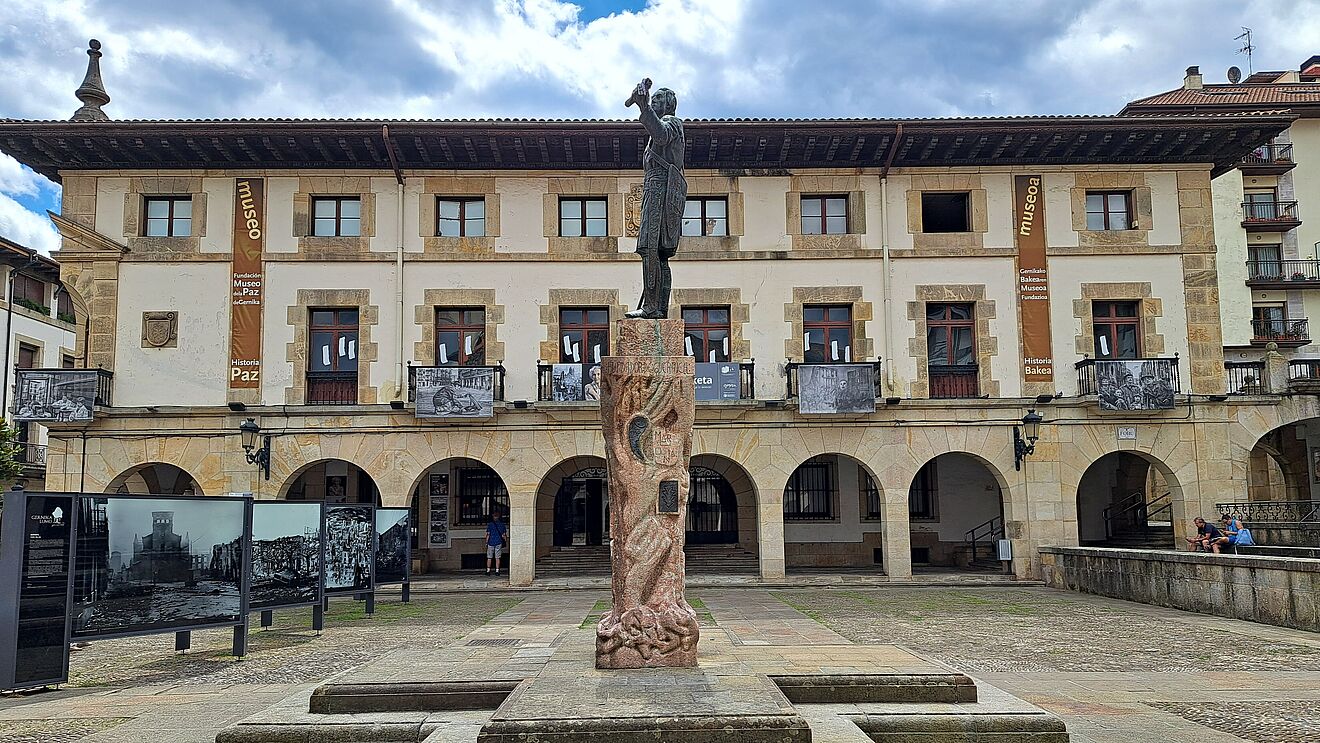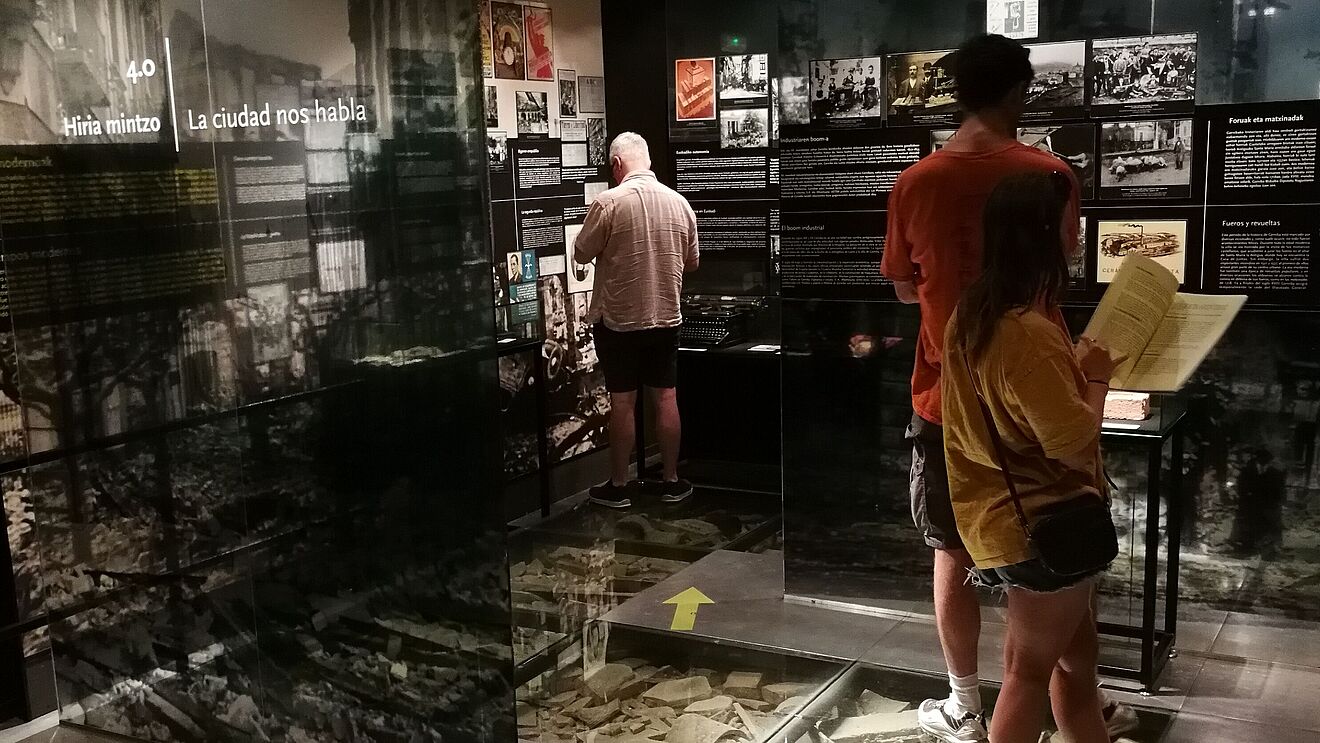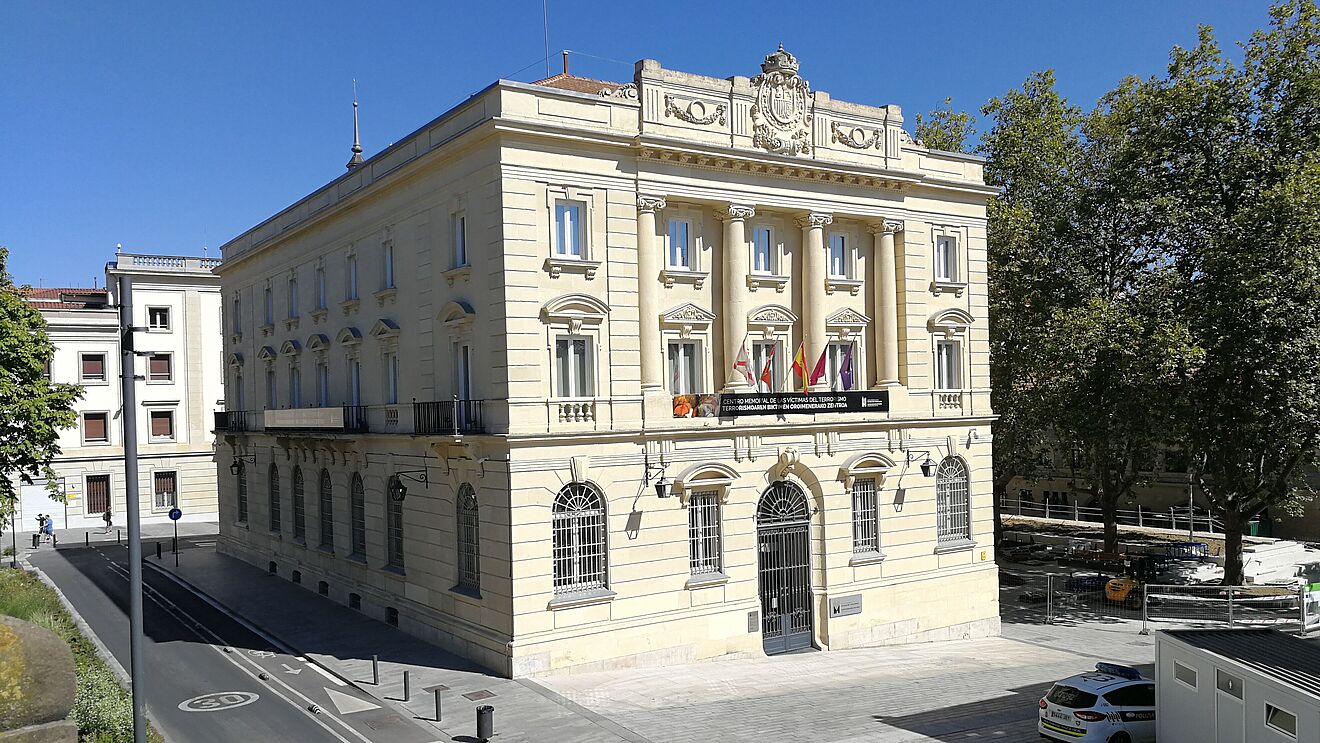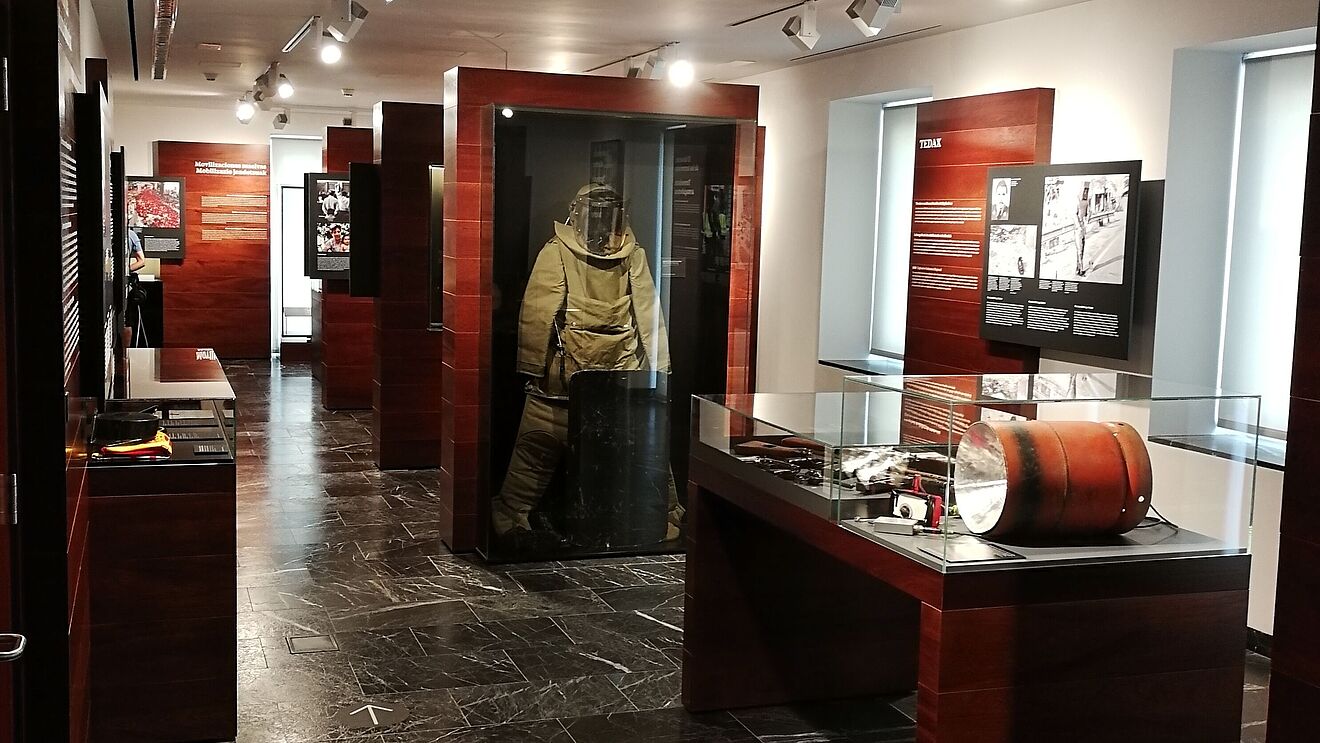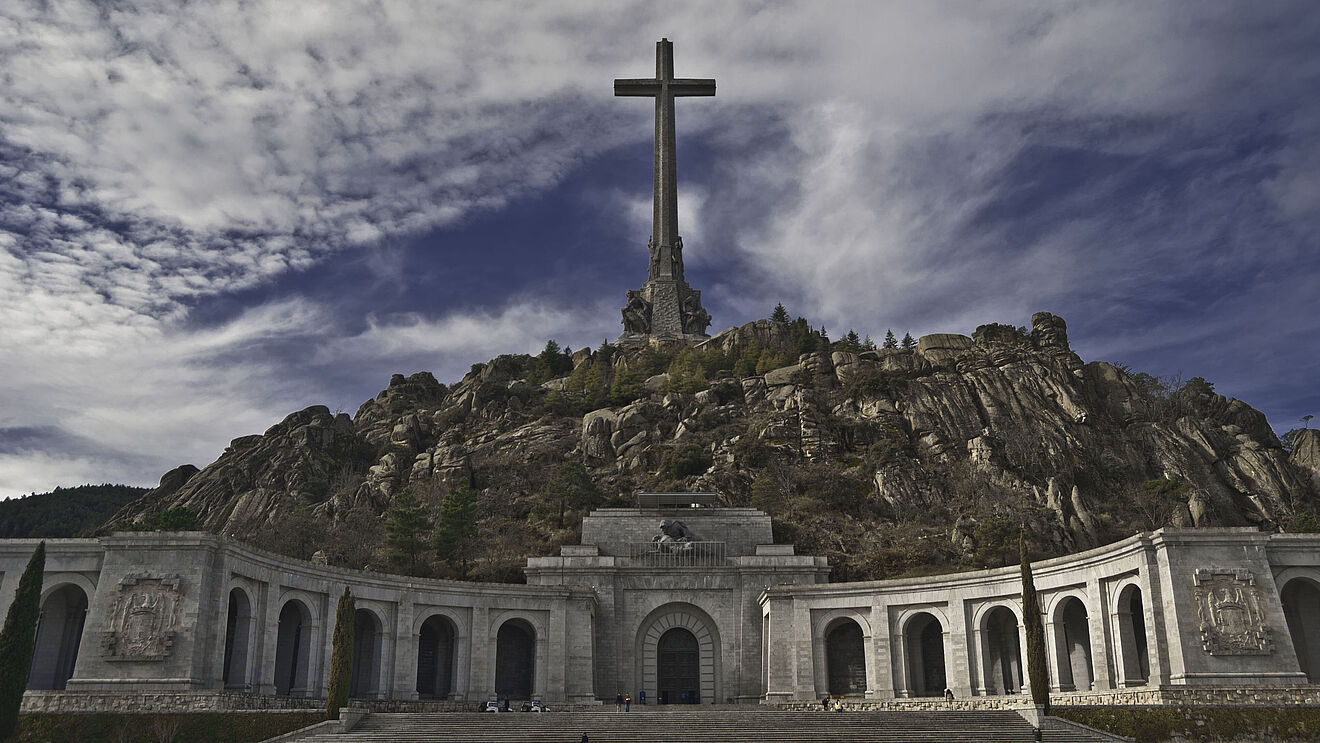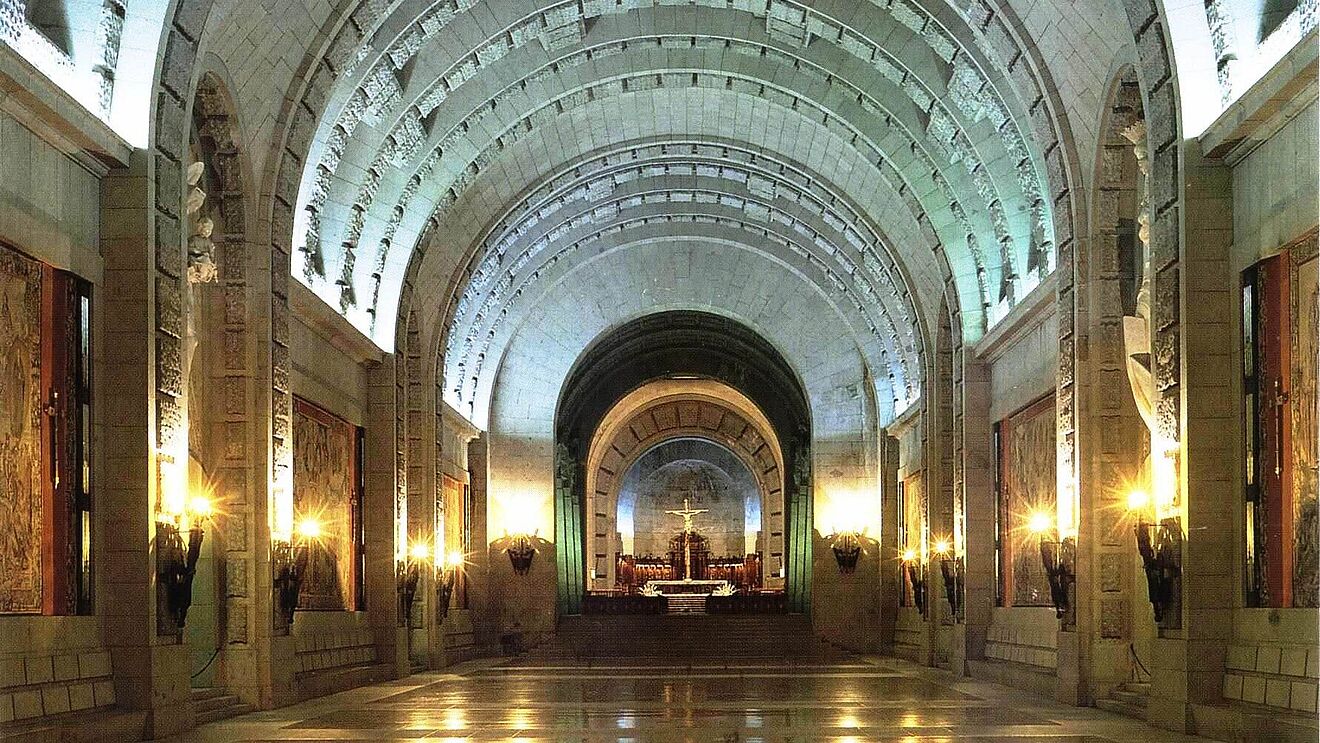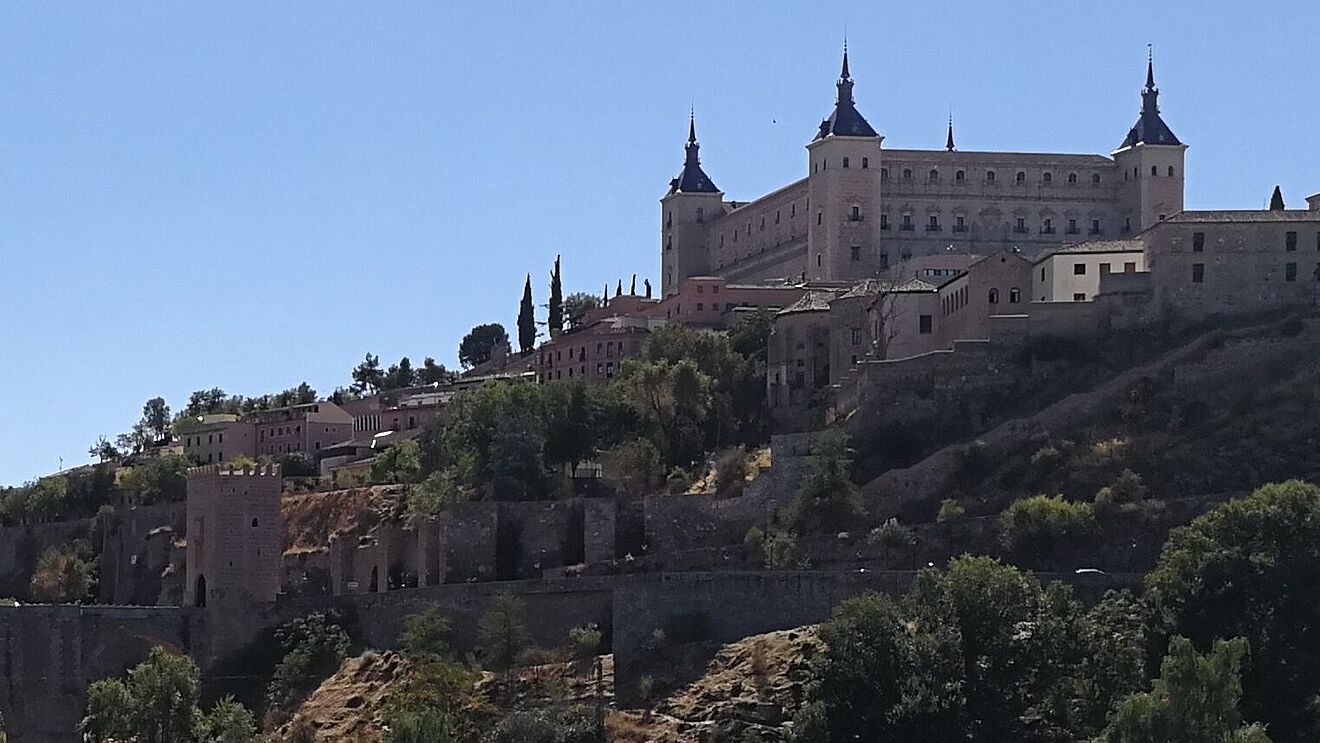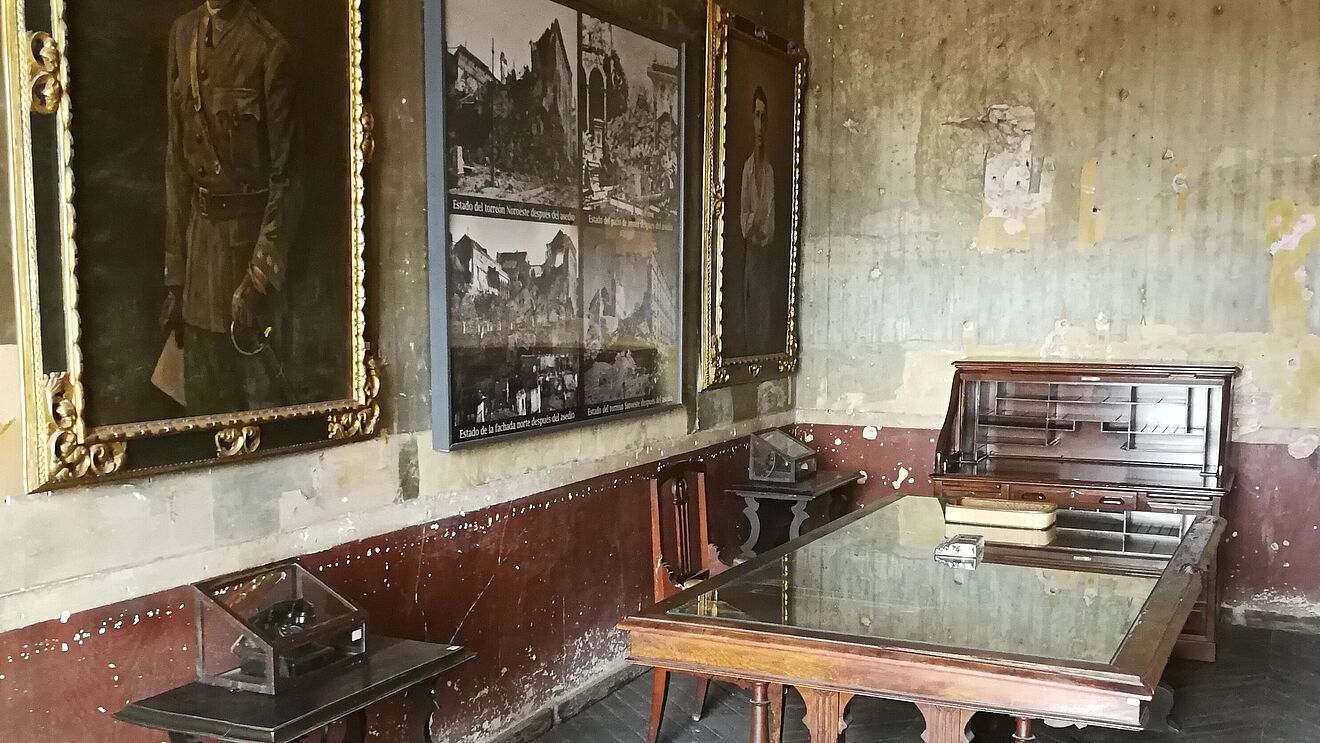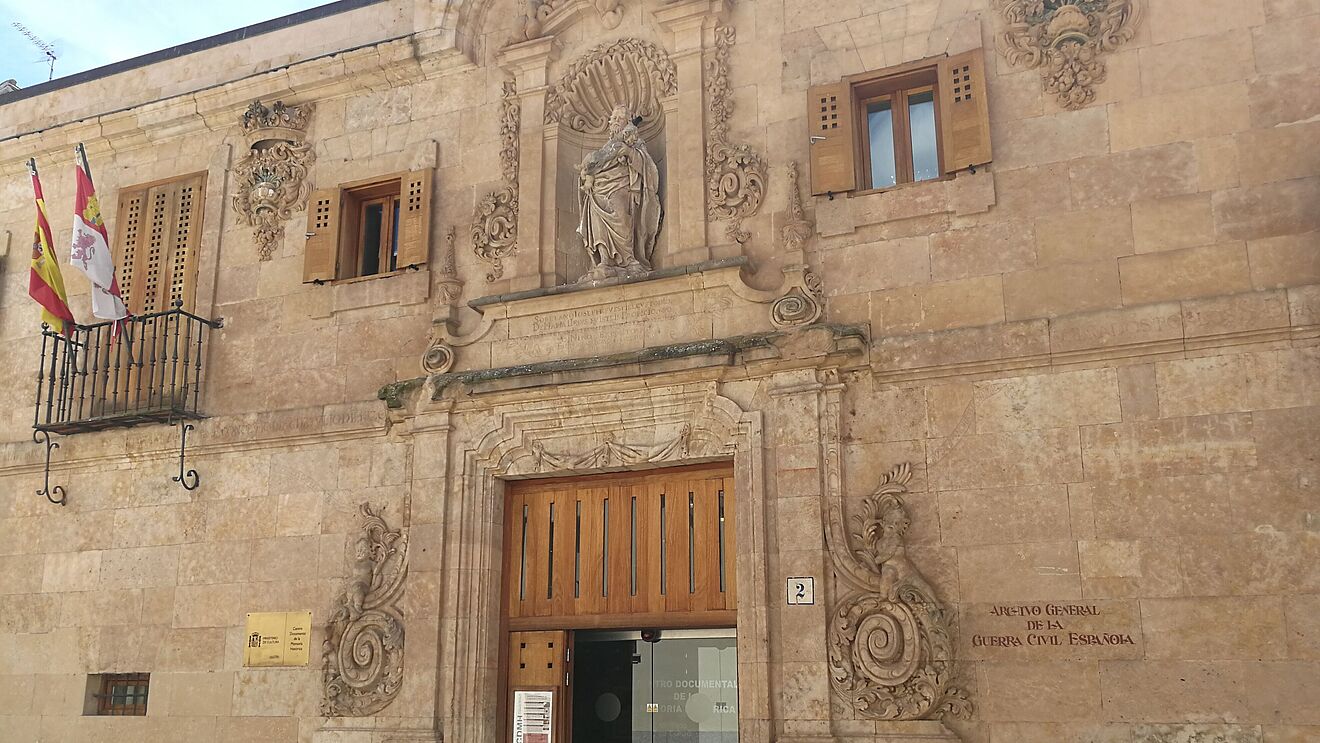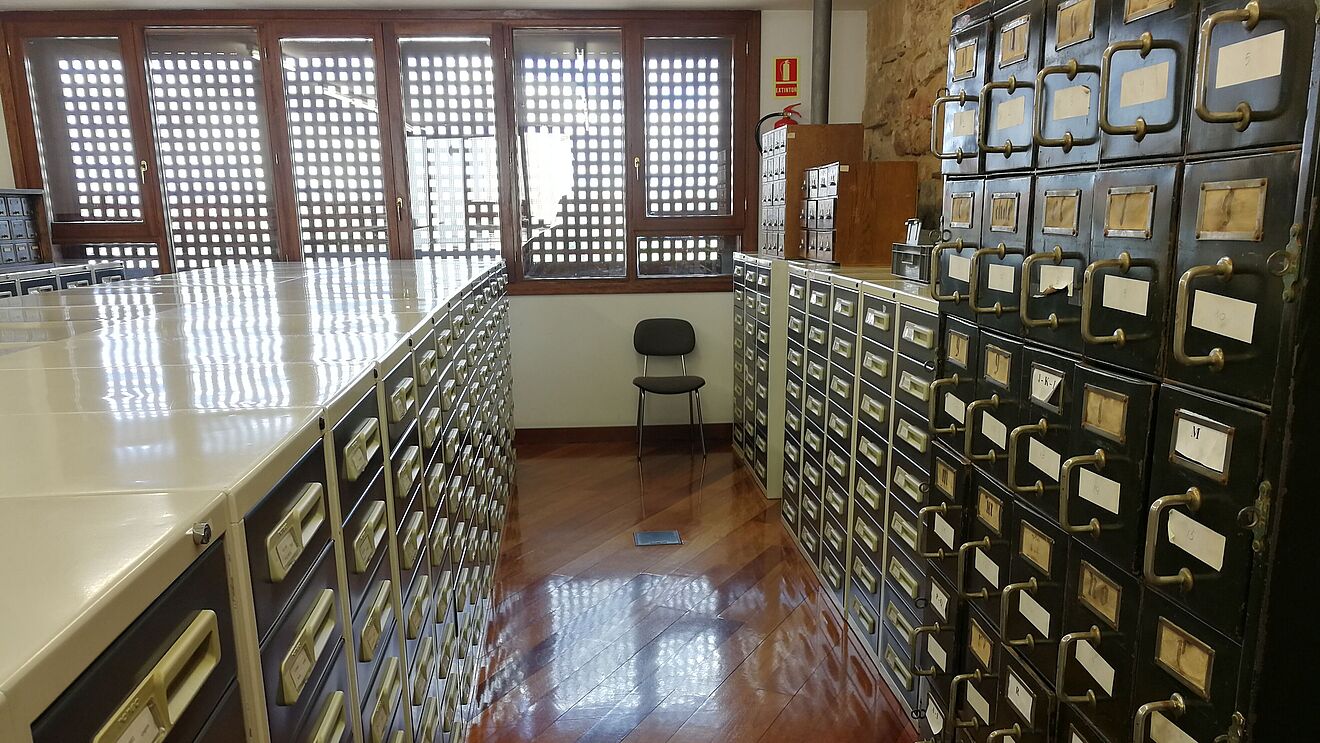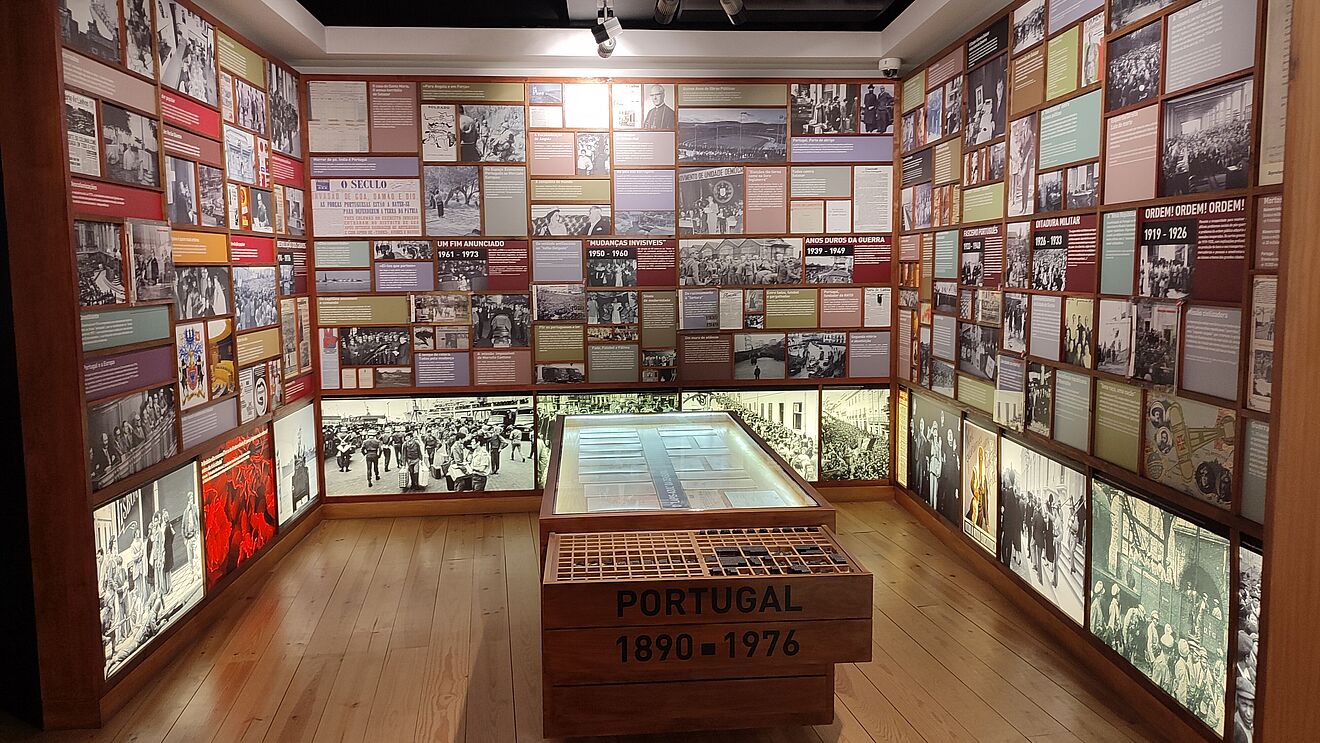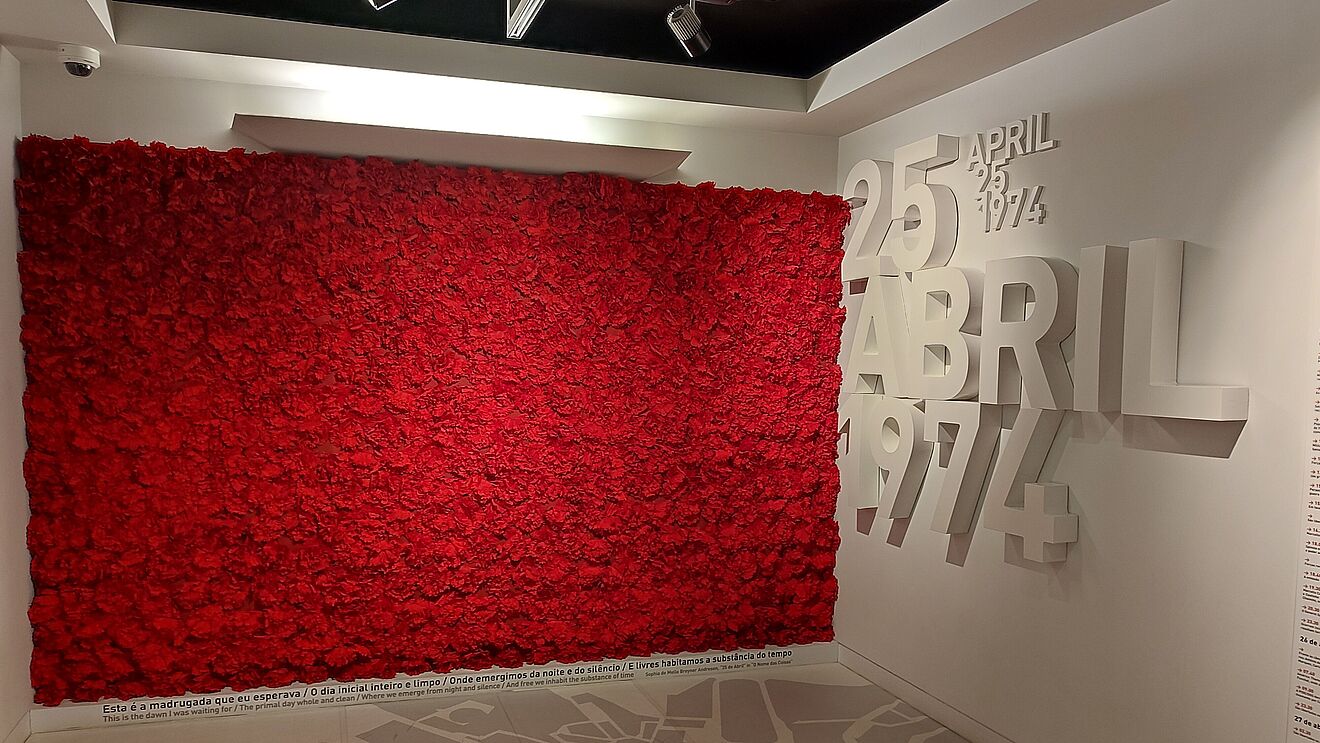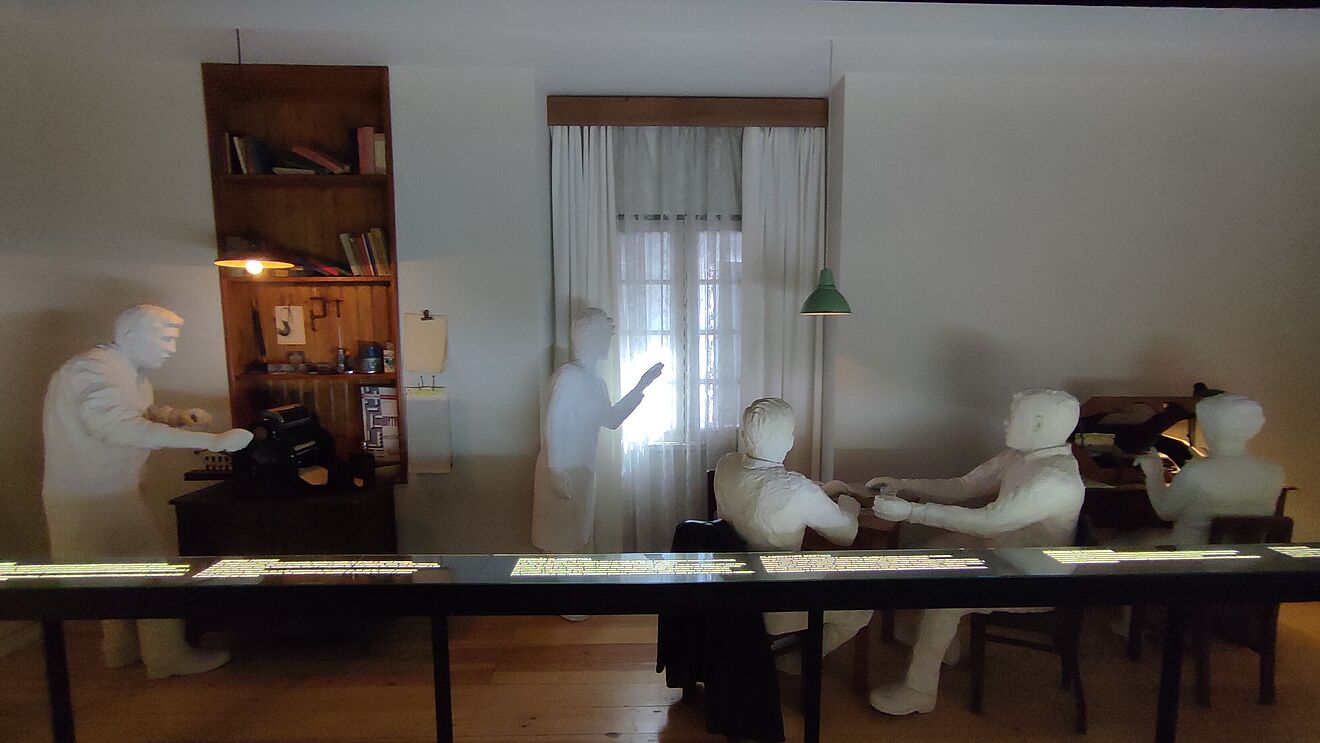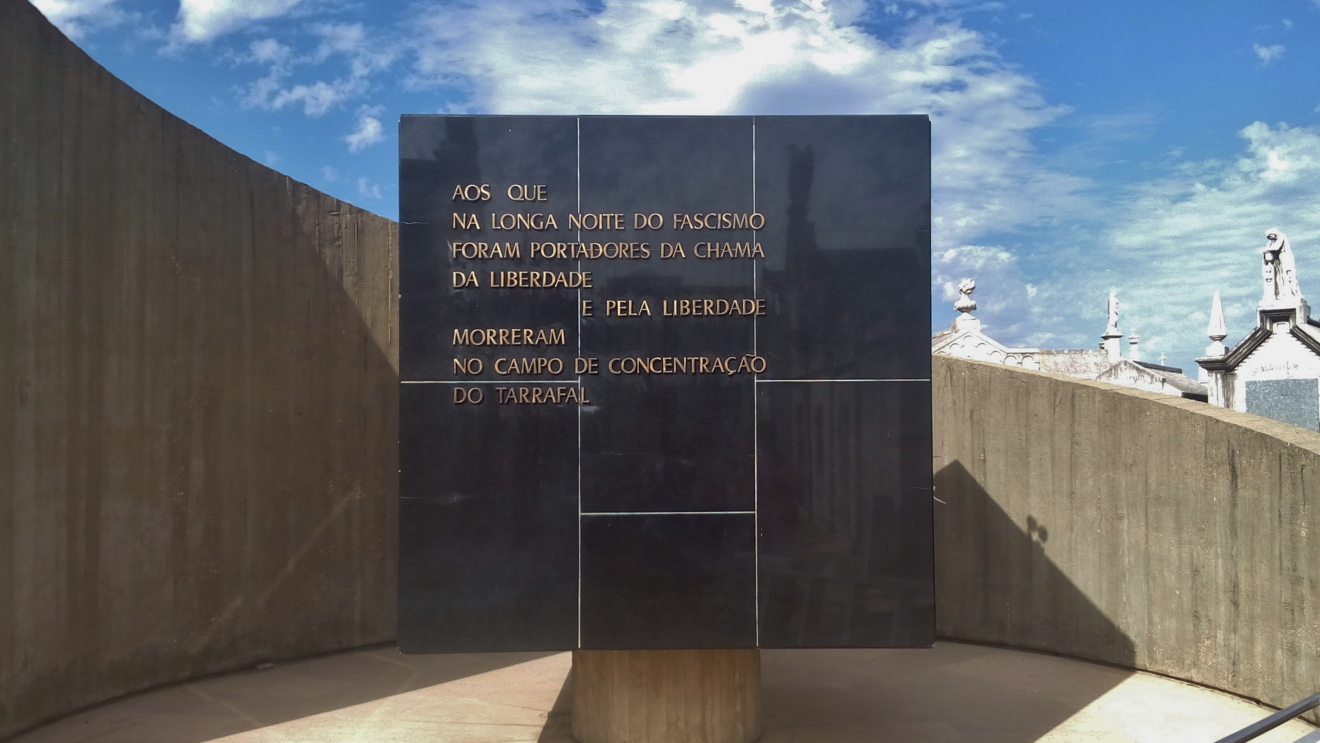Museums and Institutions in Spain
The museum landscape in Portugal is still strongly characterised by the historical beginnings of the country and by its perceived finest hours. Only recently, through the commitment of civil society, has the nation’s problematic contemporary history also been brought into the centre of attention.
Large crowds that still ostentatiously raise their hands in the “Roman salute” – as can at times be observed in Spain and Italy – are still the exception in Portugal. Nevertheless, such deviations can be observed on a smaller scale in the provincial town of Vimieiro near Coimbra, the birthplace and burial site of the former dictator António de Oliveira Salazar. On both the dictator’s birthday and the anniversary of his death, small groups of Saudosistas (nostalgics) go on a pilgrimage to the dictator’s cemetery and transform the tranquil village into a small Predappio. The epitaph affixed to Salazar’s grave also fits this image, representing more of a hagiographic depiction than a critical reflection of the historical figure. The house where Salazar was born, also in Vimieiro, became a bone of contention. It was to have been converted into a museum. However, the planned project has provoked massive protests since its very beginnings in 1989. Even proposed concessions such as the conversion of Salazar’s birthplace into a “Documentation Centre of the New State”, in which above all the dictatorial nature of the regime was to have been emphasised, have not achieved consensus to date.
In diametric contrast to such unofficial Salazar worship stands the officially registered civil movement “Do not erase the memory!” (NAM). NAM was formed on 5th October 2005 in response to the sale of the headquarters of the former political police PIDE in Lisbon. The Portuguese state’s failure to use the site where dictatorial crimes were committed as a memorial mobilised the political will of former victims and erstwhile members of the opposition to the dictatorship. What had initially been a spontaneous association grew into an organisation with firm structures. It has become an essential pillar of memory work in Portugal. Since its foundation, NAM has initiated numerous projects to come to terms with the dictatorship and to honour 25th April: These include museum projects, monuments and commemorative plaques for the historical contextualisation of important places of memory in the context of dealing with the dictatorial past in Portugal.
It was to take a full 50 years until the first museum about the resistance to the Salazar dictatorship was inaugurated on 25th April 2015. The building complex of the Aljube jail for political prisoners in the centre of Lisbon provided a fitting location. The installation of the Aljube Museum, however, was not initiated by the state. Instead, civil society had to fight hard for it. The instrumental actors included NAM and the then Mayor of Lisbon and current Prime Minister of Portugal, António Costa. The Aljube Museum’s permanent exhibition focuses on the fierce struggle of the resistance against the dictatorship. However, the ideology of Salazarism, the Portuguese Colonial War and the Carnation Revolution are also conveyed by the museum in an appealing way. This was followed up in 2019 by the museumisation of another political prison of the “New State” in the fortress of Peniche, a small coastal town north of Lisbon. The fact that the creators of the new museum in Peniche had learned from the example of Aljube is clearly recognisable in the permanent exhibition there.
Links
Webpage of the Peace Museum of Guernica (Spanish)
Virtual Tour of the Victims of Terrorism Memorial Center in Vitoria-Gasteiz (Spanish)
Webpage of the Documentation Center of Historical Memory (CDMH) in Salamanca (Spanish)
Webpage of the Association for the Recovery of Historcial Memory (ARMH, Spanish)
Museums and Institutions in Portugal
The museum landscape in Portugal is still strongly characterised by the historical beginnings of the country and by its perceived finest hours. Only recently, through the commitment of civil society, has the nation’s problematic contemporary history also been brought into the centre of attention.
Large crowds that still ostentatiously raise their hands in the “Roman salute” – as can at times be observed in Spain and Italy – are still the exception in Portugal. Nevertheless, such deviations can be observed on a smaller scale in the provincial town of Vimieiro near Coimbra, the birthplace and burial site of the former dictator António de Oliveira Salazar. On both the dictator’s birthday and the anniversary of his death, small groups of Saudosistas (nostalgics) go on a pilgrimage to the dictator’s cemetery and transform the tranquil village into a small Predappio. The epitaph affixed to Salazar’s grave also fits this image, representing more of a hagiographic depiction than a critical reflection of the historical figure. The house where Salazar was born, also in Vimieiro, became a bone of contention. It was to have been converted into a museum. However, the planned project has provoked massive protests since its very beginnings in 1989. Even proposed concessions such as the conversion of Salazar’s birthplace into a “Documentation Centre of the New State”, in which above all the dictatorial nature of the regime was to have been emphasised, have not achieved consensus to date.
In diametric contrast to such unofficial Salazar worship stands the officially registered civil movement “Do not erase the memory!” (NAM). NAM was formed on 5th October 2005 in response to the sale of the headquarters of the former political police PIDE in Lisbon. The Portuguese state’s failure to use the site where dictatorial crimes were committed as a memorial mobilised the political will of former victims and erstwhile members of the opposition to the dictatorship. What had initially been a spontaneous association grew into an organisation with firm structures. It has become an essential pillar of memory work in Portugal. Since its foundation, NAM has initiated numerous projects to come to terms with the dictatorship and to honour 25th April: These include museum projects, monuments and commemorative plaques for the historical contextualisation of important places of memory in the context of dealing with the dictatorial past in Portugal.
It was to take a full 50 years until the first museum about the resistance to the Salazar dictatorship was inaugurated on 25th April 2015. The building complex of the Aljube jail for political prisoners in the centre of Lisbon provided a fitting location. The installation of the Aljube Museum, however, was not initiated by the state. Instead, civil society had to fight hard for it. The instrumental actors included NAM and the then Mayor of Lisbon and current Prime Minister of Portugal, António Costa. The Aljube Museum’s permanent exhibition focuses on the fierce struggle of the resistance against the dictatorship. However, the ideology of Salazarism, the Portuguese Colonial War and the Carnation Revolution are also conveyed by the museum in an appealing way. This was followed up in 2019 by the museumisation of another political prison of the “New State” in the fortress of Peniche, a small coastal town north of Lisbon. The fact that the creators of the new museum in Peniche had learned from the example of Aljube is clearly recognisable in the permanent exhibition there.
Links
Website of "Não apaguem a Memória!“ (NAM) (Portuguese)
Website of the Aljube Museum (Portuguese/English)
Trailer about the Aljube Museum (Portuguese)
YouTube Channel of the Aljube Museum with Oral History Interviews (Portuguese)
Website of the Museum in Peniche (Portuguese/English/Spanish)
Website of the Museum of the Former Concentration Camp in Tarrafal in Cape Verde (Portuguese)
